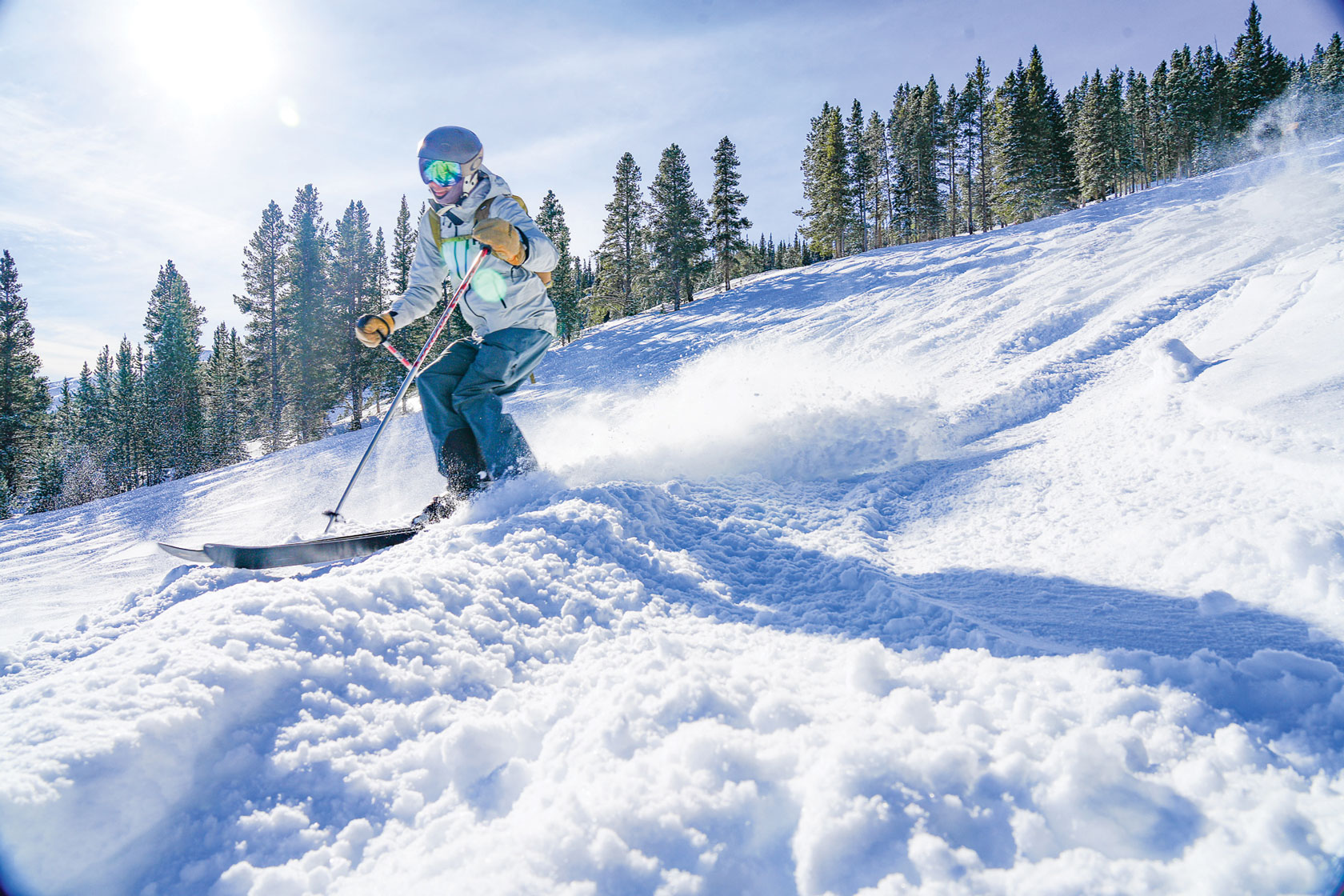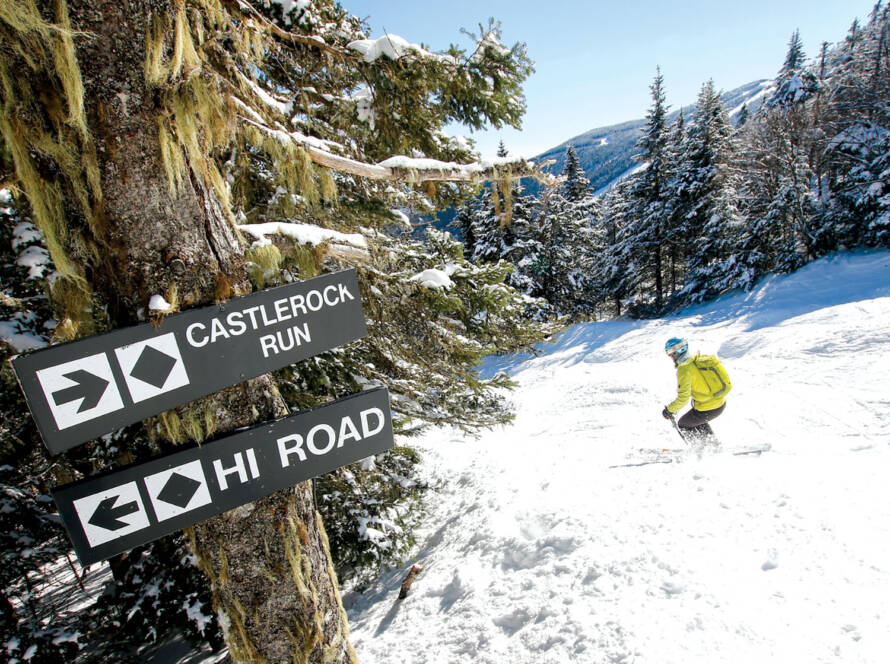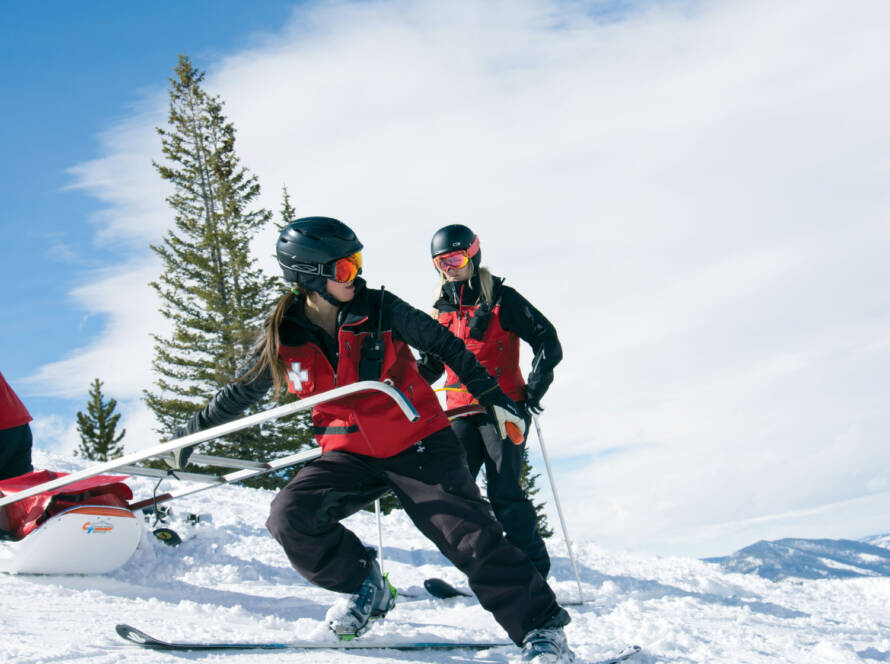Breckenridge Ski Resort has been famous since its ski trails were first cut in 1961. Today, “Breck,” owned by Vail Resorts, Inc., a company headquartered in Broomfield, Colo., is one of the country’s biggest and busiest ski resorts.
In the area now called Peak 8, the resort initially featured one double chair and one T-bar lift. Today, it’s grown to 35 lifts that carry almost 50,000 passengers per hour. Breck’s Five Peaks, five interconnected peaks of the Rocky Mountain’s Tenmile Range, offer more than 180 trails for skiing and riding, and some of the most accessible high alpine terrain in the United States. Approximately 40 percent of its nearly 3,000 acres are above the tree line, spanning multiple peaks, expansive wide-open bowl terrain, cliffs and technical chutes.
The resort is located in Breckenridge, Colo., about 100 miles west of Denver. The town was founded in the mid-1800s as a mining base, named for a prospector attracted by the Pikes Peak Gold Rush of 1859, and its population grew and declined in waves over the years. Around a century ago, the town’s population had dropped to less than 300 people. By then, most mining and dredging operations had ended, and the region had produced about a million troy ounces of gold.
Today, Breckenridge is a tight-knit community of just over 5,000 year-round residents whose primary industry is tourism. The Town of Breckenridge is one of the largest historic districts in Colorado, still celebrating its mining past and striking a balance between small-town charm and modern-day amenities – its historic original Victorian clapboard and log exteriors accommodate hundreds of restaurants, bars, shops and specialty boutiques catering to more than three million visitors each year, and local businesses earning more than half a billion dollars in annual taxable sales. According to tax and traffic numbers, 2022 was one of the town’s busiest years, with visitors bringing in more revenue than before the COVID-19 pandemic.
The region enjoys an average of 300 days a year of sunshine and a yearly snowfall of 355 inches. Throughout the year, the temperature typically varies from 13°F to 68°F and is rarely below 0°F or above 75°F.
One of North America’s longest spring-skiing seasons
With more than 1.6 million skier and snowboarder visits yearly, Breckenridge is one of Vail Resorts’ most popular properties – not just in the winter. In the summer, the region’s alpine hiking trails, rivers and lakes attract hundreds of thousands of hiking, fly-fishing, mountain biking, kayaking and white-water rafting enthusiasts. Due to its high elevations, from its base of 9,600 feet to its highest summit of 12,998 feet, Breckenridge enjoys one of the longest spring-skiing seasons in North America. The resort operates until the snow melts, with spectacular spring snow conditions often lasting into May; beginning in late April, intermediate, advanced and expert-level skiers and riders can access signature high alpine terrain across three peaks.
“Breck’s Five Peaks offer some of the best high alpine skiing and riding in the country,” said Jody Churich, Breckenridge Ski Resort’s vice president and chief operating officer.
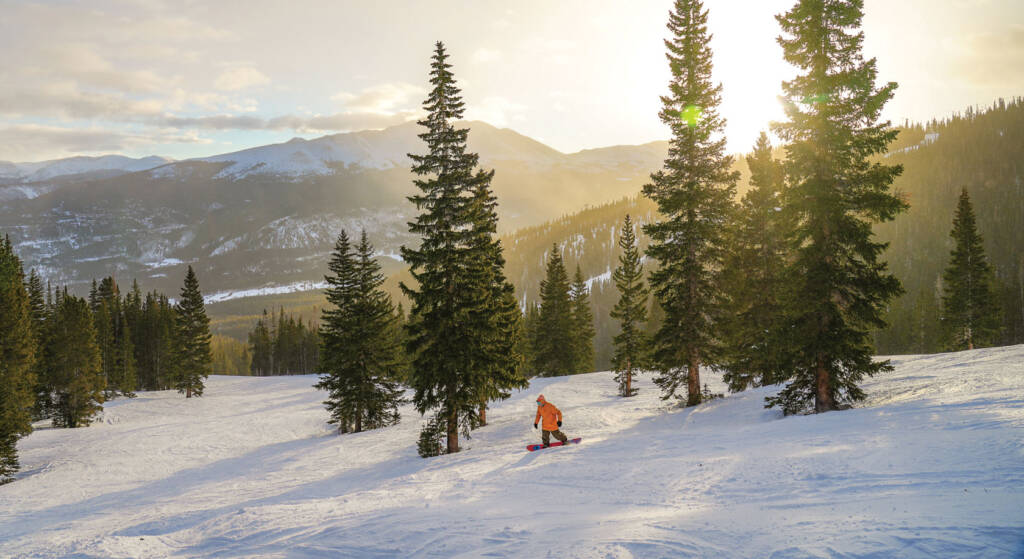
The resort also features some of the most boast-worthy equipment, including the Imperial SuperChair, the highest chairlift in North America, topping out at 12,840 feet above sea level. Manufactured by Leitner-POMA and installed in 2005, the high-speed quad chairlift is powered by a 400-horsepower motor and spans 2,174 feet over nine towers, with a vertical rise of 939 feet.
The BreckConnect Gondola and seamless ski-to-town trails connecting Peaks 8 and 9 to Main Street allow guests to ski from the top of North America’s highest chairlift (the Imperial Express) right into the town for après-ski relaxation.
“And with the walkable downtown and free bus system, you really don’t need a car while you’re here,” said Churich. “One of our biggest focuses at the resort is flow; from the moment you arrive at Breck to the on-mountain experience to when you’re ready to go home. On a large scale, we’re continually investing in infrastructure across the mountain to help move people more efficiently with new lifts and upgrades across our Five Peaks.”
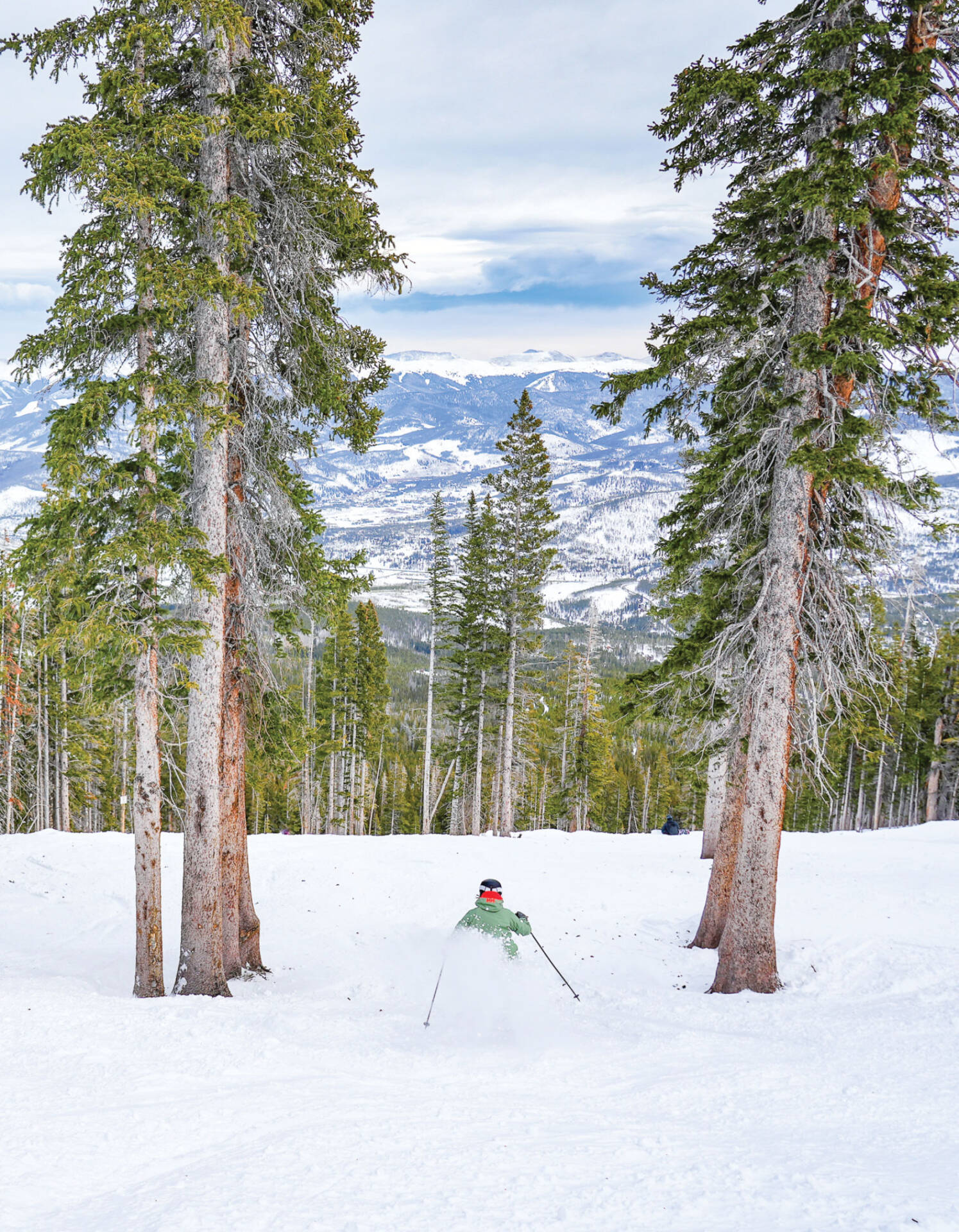
Breckenridge’s new Freedom SuperChair opened on Peak 7 in 2021; the upgraded Rip’s Ride opened this season on Peak 8, with its base area adding a new high-speed quad planned this summer to replace 5-Chair and make room for a much larger children’s ski school by next winter.
This upgrade means that all lifts out of Peak 8 will be high-speed, providing another primary access point to mountain terrain from its base, and a more efficient and progression-friendly way for skiers and riders to experience the resort’s most popular base area and improve the drop-off experience.
“We are constantly observing our operations to find ways to better improve the employee and guest experience in our operations, such as encouraging and incentivizing carpooling, looking at the way we design our lift mazes and how we help guests efficiently load lifts, and encouraging guests to utilize our ski-to-town trails for easy egress at the end of the day,” Churich said.
Most mountain ops training is performed in-house
“There are around 15 grooming vehicles operating on the mountain at any given time,” said Greg Davidson, the resort’s director of mountain operations. “Nightly slope grooming is performed by a team of about 40 operators, split into two overnight shifts that cover the entire period the resort is closed, from 4 p.m. one day until 8:30 a.m. the next, and the shift change occurring at midnight.”
Most operators are dedicated to grooming trails, and a few specialize in Breckenridge’s terrain parks.
“In an average season, we train around a third of new employees – we’re fortunate to have a wealth of staff experience, and most of our mountain ops training is performed in-house,” said Davidson. “Snow grooming is such a unique profession that no single combination of previous experience guarantees success, but we do give preference to people who [can] handle a complex vehicle. Training starts with recruiting the right employees – we look for experience not only in resort operations, but also in industries such as construction, landscaping and heavy-equipment operation. Of course, knowledge of skiing and riding is also an important component, and the new operators that progress the quickest are often the ones that get out and ski their product the most.
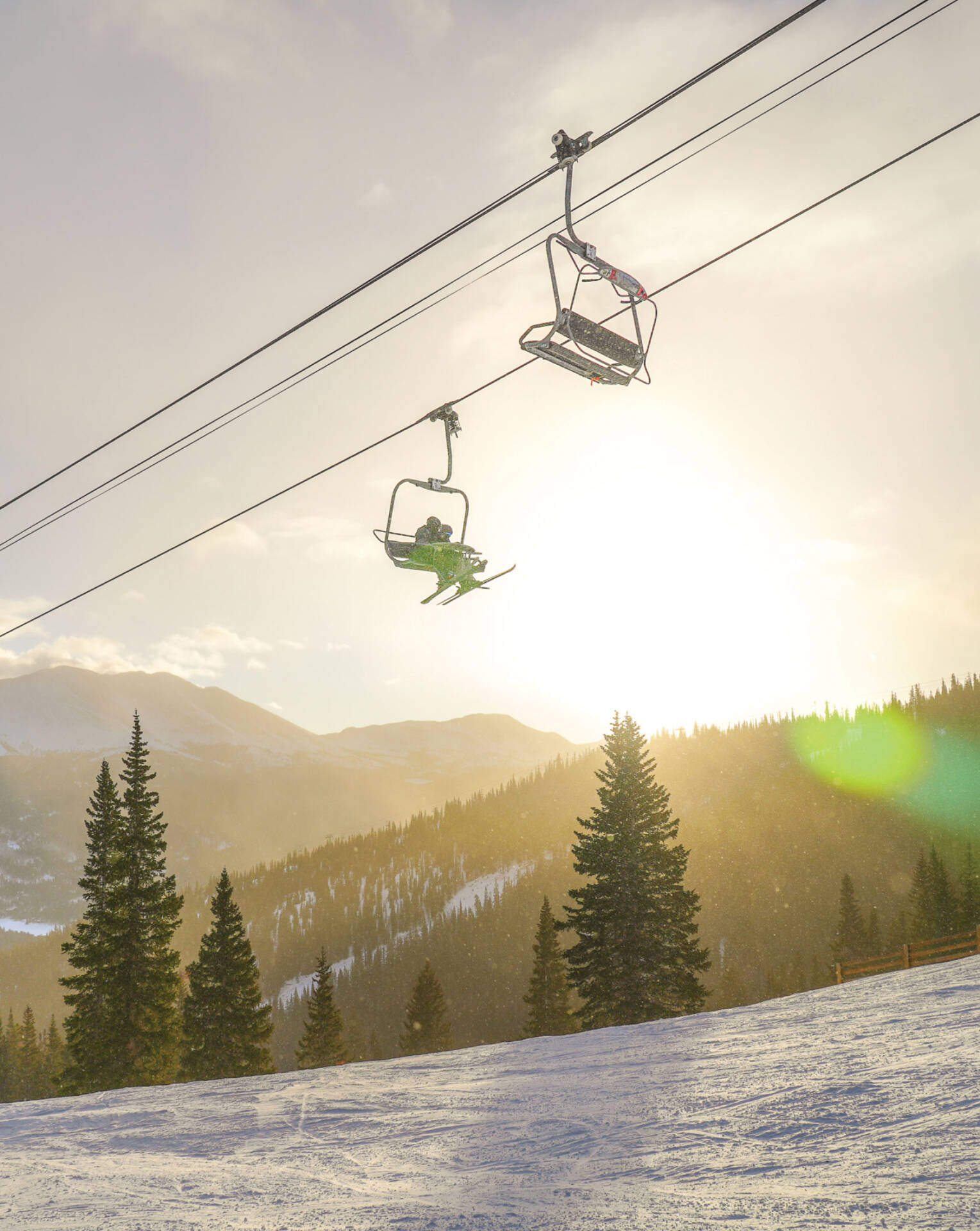
“Most training is done on the job, but we also use the PistenBully Pro Academy entry-level training for new operators, which we find to be a great classroom supplement to our field training, teaching both the mechanical basics of the vehicles [and] the fundamentals of snow-grooming techniques.”
The resort’s fleet is a mix of vehicles manufactured by Kässbohrer and Prinoth, and powered by Cummins and Caterpillar diesel engines. Most of them meet the strictest Tier 4 U.S. Environmental Protection Agency emissions requirements. The equipment used during springtime operations is the same used all season long, although different techniques may be employed.
“During the warmer months, we groom certain areas in the evening when the snow is still soft, while other areas may be groomed in the early morning hours when the temperatures are the coldest. Springtime can also bring big snowfall, in which winch grooming vehicles are often utilized to maintain our steeper slopes,” said Davidson.
Davidson says another springtime technique is snow farming, “where snow is strategically moved from underutilized areas onto our main trails to increase the snow depth so the trails can last as long as possible into the spring.”
Reaching a net-zero operating footprint by 2030
Colorado has been warming measurably during the last 30 years due to climate change, and new research forecasts that it will become much hotter, dryer and much less skiable in just a few decades. Estimates project temperatures rising an additional 2.5°F to 5°F by 2050, and losing half or more of its snow by 2080 because of drought.
“Climate change is one of the biggest issues facing not only the ski industry, but the world,” said Dominique Giroux, sustainability manager at Breckenridge.
Vail Resorts’ mountain segment owns and operates 40 resorts in the United States, Canada, Australia, and Switzerland. Its goal is to reach a net-zero operating footprint by 2030 across all its North American properties, including zero waste to landfill, net-zero emissions and net-zero operating impact on forests and habitat.
“We are making big progress towards our goals, such as reaching 100 percent renewable electricity across our North American resorts,” said Giroux.
Actions at Breckenridge have included initiating robust waste-sorting, recycling and composting at the facility, upgrading 110 snow guns with new, low-energy technology across Peaks 7, 8, 9 and 10, donating to sustainability initiatives such as tree-planting and to the National Forest Foundation to support local trail maintenance, public outreach and education.
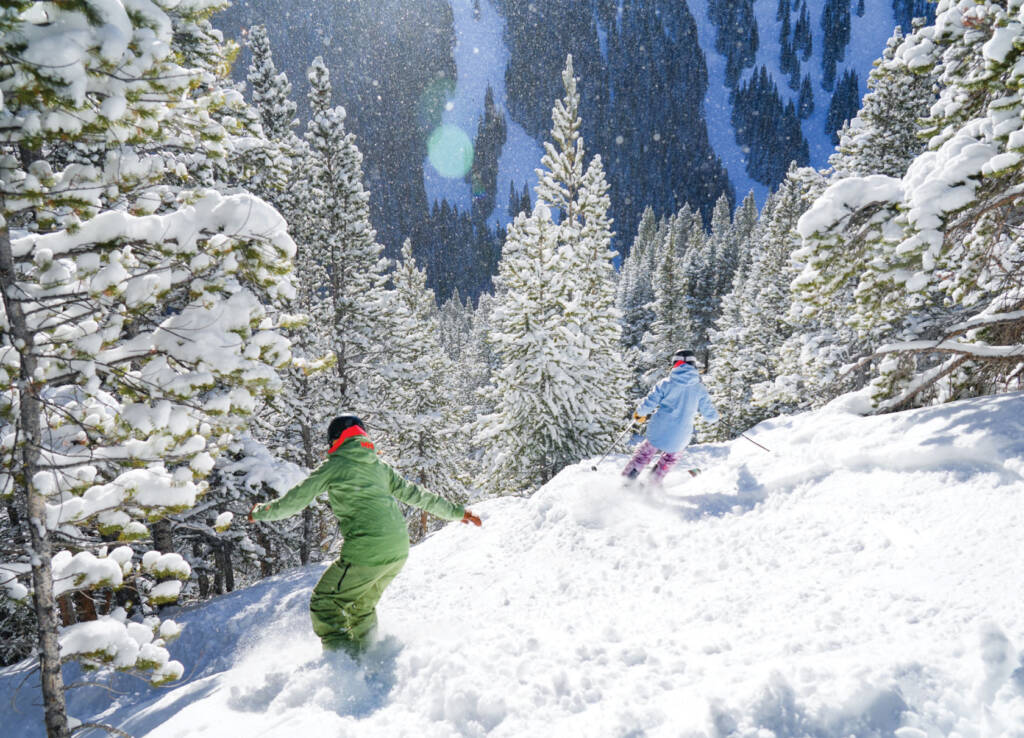
Along with other Vail resorts, Breckenridge has adopted an IdleWise policy, putting a one-minute idling-time limit on approximately 2,000 company vehicles and 800 snowmobiles to reduce emissions and adverse human health impacts, protect air quality and improve vehicle performance. The resort is already making other energy-efficient snowmaking improvements and LED retrofits where possible, and purchasing renewable energy in available markets.
In 2022, Vail Resorts reached 100 percent renewable electricity for its North American operations. They achieved a 29 percent reduction in waste to landfill from its baseline, a decrease of nearly five million pounds, and are on their way to achieving a 2030 zero-waste-to-landfill target.

